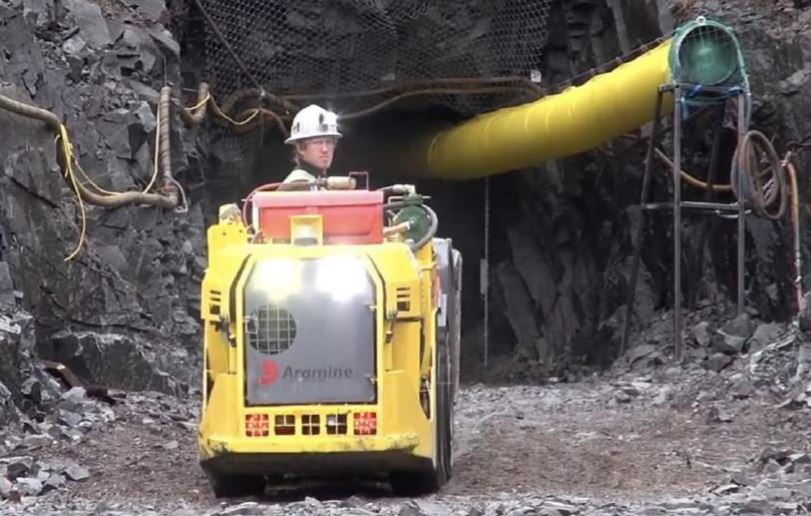Canada Cobalt up on Castle Mine silver find

By Peter Kennedy
Canada Cobalt Works Inc. [CCW-TSXV; CCWOF-OTC; 4T9B-FSE] advanced in active trading Friday December 13 after the company said drilling has intersected massive native silver mineralization at its Castle Mine property in northern Ontario.
The former cobalt and silver producing Castle Mine property is located 85 km northwest of the historic Cobalt silver mining camp at and near the Town of Cobalt.
Records show that over 9.5 million ounces of silver and 299,847 pounds of cobalt was recovered from the Castle Mine. That includes the 3.0 million ounces produced by Agnico-Eagle Mines Ltd. [AEM-TSX, NYSE], before a collapse in the price of silver prompted Agnico-Eagle to abandon the operation in 1989.
In a December 4, 2019, press release, Canada Cobalt said diamond drilling had commenced at Castle East for first-ever follow-up on the Robinson Zone, a high-grade discovery that was highlighted by a 2011 drill hole (CA-11-08) that cut 40,944 g/t silver over 0.45 metres within a broader core length of 3.1 metres grading 6,476 g/t silver.
This discovery, aided initially by geophysics and now supported by a high technology camera, is less than 2 km east of three prolific past producers in the Gowganda Camp – the Castle, Capital and Siscoe mines.
Those deposits were exploited along the shallow western margin of the productive Nipissing diabase that dips toward the very under-explored Castle East area, where Canada Cobalt is now targeting additional deposits, within and outside the diabase.
Canada Cobalt said it has enhanced the exploration opportunity at the Robinson Zone by using a custom-built borehole inspection camera to successfully reach the 2011 drill hole intersection of spectacular native silver at a vertical depth of 420 metres.
The company said its technical team was able to view, identify and film the vein. This provided an invaluable geometric characterization of the unit, allowing for an accurate plotting of a series of wedge holes designed to pierce the vein structure at four different points to immediately build out this high-grade discovery.
Following completion of the wedge holes, the company said a new hole will be drilled to intersect the vein structure(s) closer to surface.
On December 12, 2019, Canada Cobalt said initial and ongoing follow-up drilling at the Castle East Robinson Zone high-grade silver discovery has intersected massive native silver mineralization over a wider vein width up-dip from drill hole CA-11-08, further supporting the potential for a rich new silver-cobalt system in the heart of a basin area immediately adjacent to the three past producing mines.
The announcement came after the close of trading on December 12.
When trading resumed on Friday, Canada Cobalt shares advanced on the news, rising 4.7% or $0.02 to 44 cents on volume of 1.08 million. The shares trade in a 52-week range of 25 cents and 60 cents.
Following four successful short wedge holes that provided important pierce points into this northwest-southeast striking and southwest dipping vein structure, Canada Cobalt said it has just commenced a program of new holes from surface aimed in part at determining the full extent of what it said is a highly mineralized “shoot.”
Canada Cobalt said the deposit model and history of the camp, and the broader Northern Ontario Silver-Cobalt district, shows that these narrow but unusually rich vein shoots (generally one to six inches in true width are in rare cases up to 12 inches in true width) can extend for tens or even hundreds of feet (pinching and swelling).
They are typically surrounded by strongly mineralized wall rock and often within a network of closely spaced parallel veins and veinlets in addition to silver-filled fractures.
Canada Cobalt is a company that is positioning itself to become a vertically integrated North American leader in cobalt extraction and recovery. It is aiming to develop a number of business lines that include exploration and mining, production of cobalt-rich gravity concentrates and the sale of concentrates to battery cathode makers in Asia and Europe.
Another line of business may also involve the use of proprietary technology called Re-20X which is designed to efficiently extract cobalt from ore and produce cobalt sulphate to the specifications required by battery sector end users.
The Re-20X technology is currently being tested at SGS Lakefield Research Ltd. at Lakefield, Ont., to see if it works for extracting cobalt, lithium and other metals from used lithium-ion batteries.
It is a strategy that is being led by Canada Cobalt President and CEO Frank Basa, a 60-year-old metallurgist, who worked for Agnico-Eagle Mines during the 1980s. During that time, he was instrumental in the development of the Re-20X process.
